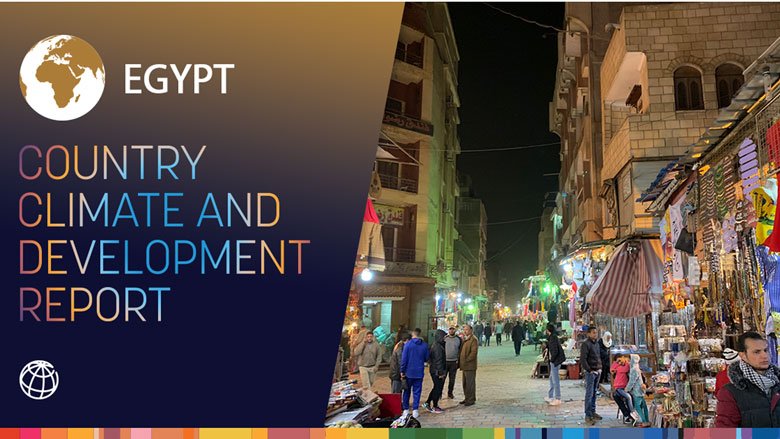The World Bank’s Country Climate and Development Reports (CCDRs) are core diagnostic tools that analyze and provide recommendations on how countries can achieve their development goals in the context of mitigating and/or adapting to climate change. The Egypt CCDR was published on November 8, 2022.
The Egypt CCDR identifies policy actions and investment opportunities that, if implemented within five years, could make the use and allocation of natural resources more efficient, reduce the impacts of climate change on people and businesses, and enhance Egypt’s competitiveness in global markets.
Summary of the challenges
Egypt faces the following three growing climate and development challenges, which, if not addressed, will most deeply affect the poor and vulnerable and can put at risk Egypt’s development goals.
- High uncertainty in the timing and volume of available water resources. The Nile River provides about 97% of freshwater resources in Egypt. Climate change has significantly increased uncertainty around the availability of that water. Assuming available water resources and population growth remain constant, Egypt will reach the threshold for extreme water scarcity in 2033.
- Climate vulnerabilities lie in densely populated cities and coastal areas. In Egypt’s 14 major cities (including several coastal cities), over 80% of the population is exposed to at least one major climate or environmental risk, including flooding, heat stress, air pollution, desertification, and sea level rise.
- Egypt’s shift to a green and low-carbon development path is not on pace with global markets, which may affect competitiveness. While Egypt’s contribution to global emissions is not high, economic growth is still tightly linked to greenhouse gas (GHG) emissions. Three sectors in Egypt (energy, transport, and industry) account for 80% of the country’s GHG emissions, and transport and industry account for 58% of total energy consumption. At the same time, preferences in international markets are shifting to greener and lower-carbon products, an area in which Egypt will be less competitive unless it moves towards a low-carbon development path.
The CCDR recommends these cross-cutting priority actions to respond to the challenges
1) Prepare for compound climate risks by strengthening resilience and adaptation, starting with:
- In cities, reduce water losses to the 20% level and revise water supply norms to 80% of current levels, which could help Egypt save over 2 billion cubic meters of water annually. Additionally, improve the spatial management of urban growth, which could preserve nearly 39,000 hectares of green areas and avoid growth in high-risk areas.
- In agriculture, improve water allocation policies and introduce institutional changes to enable the management, allocation, and distribution of the water saved through modernized irrigation systems.
- Country-wide, invest in expanding and improving information systems that share climate- and hydrology-related information with affected stakeholders, which would help mitigate risks and reduce the costs of flooding.
2) Strengthen the country’s competitiveness while achieving stated development goals by transitioning to a low-emission path, starting with:
- The adoption, across the next decade, of ambitious, “no-regret” key actions, including the significant scale-up of renewable energy, reducing emissions in the oil and gas production chain, and reducing inefficiencies in the use of energy for electricity generation and industry.
- Reducing emissions in the transport sector through demand management via pricing interventions and awareness-raising programs, which could help achieve a reduction of 65% of GHG emissions by 2050, as compared to the World Bank baseline scenario. Key policy changes to mitigate investors’ perceived policy, regulatory, and technical risks will be needed to mobilize the private investment required for this shift.
- A focus on low-carbon cities to accelerate the fulfillment of GHG mitigation goals and enhance livability and productivity, which can deliver benefits valued at an estimated four times the required investments.
